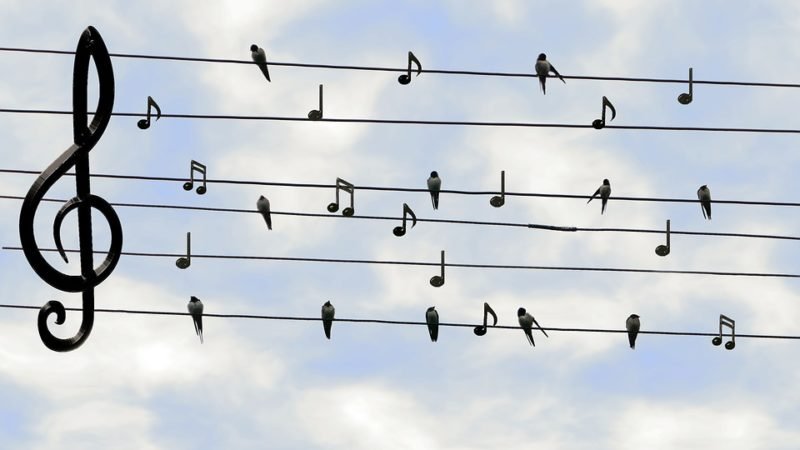At the Nobel Prize Award Ceremony 2016, when Patti Smith, as a stand-in for Bob Dylan, performs Dylan’s “A Hard Rain’s A-Gonna Fall”, but suddenly stops singing, and her eyes fill up with tears. She apologises – “I am so nervous!” – and then forgets some words of the song. But was that the truth? Was Patti Smith, who is a very experienced performer, just nervous? Was it because of the audience (the Swedish Academy)? Or was she moved by the music and her own voice? The feelings provoked by the song? The answer of course, as Dylan says in another song, is blowing in the wind.
But her reaction tells us about the affect connected to music, in this case Dylan’s song, whose words are a quite long set of poetic images given to a parent asking his/her child where he/she has been or what he/she has seen. Although there is only one voice singing the song, it is easy to distinguish between the speech of the parent and that of the child. Hence the child answers: “I’ve stepped in the middle of seven sad forests/ I’ve been out in front of a dozen dead oceans/ I’ve been ten thousand miles in the mouth of a graveyard.” A stream of apocalyptic images, of poetic images. Poetry is love of that without a name, the real (a paradoxical name for that without a name), a strange love; it is an event in language which in some way touches the real as the impossible to say and support. Should we come across “seven sad forests”, “a dozen dead oceans” or “the mouth of a graveyard”, we would probably have no words, language would stumble, but here they are evoked in the song, creating poetic effects, which helps the subject (the listener) avoid anxiety. These effects are also called to mind by the image of “song of a poet who died in the gutter”, which is also an image of the poet (Dylan), who may or may not be singing the song. The text (the song) is written by a poet (singer), who has vanished in the final written text. Furthermore, “a hard rain is going to fall” is an image of this confrontation with the real. The rain can also be seen as metaphor for various bombs in armies’ arsenals all around in the world.
While the text opens towards the real, the music is rather calm, just a few chords, no real ‘distortions’. Hence the song contains a certain dissonance between the text and the music, a certain poetic representation of the real and the pleasant side of the sound, its rhythm and harmony. Harmony and imbalance meet in music, are mixed without oppositions. This is also the case in B.B. King’s “The thrill is gone”, a song about a long-lost love. The thrill is gone, because the woman did wrong to the man (the singer), who, however, will get over it eventually. While the text is about this lost and sad love, the music is a love … of music, although King’s lead guitar plays a few blue notes outside the scales connected to the chords. This special connection between the text and the tones of the instrument evokes a common trait of much rock music with or without song text: The possibility of connecting a representation of the real with a more or less harmonic rhythm.
Silence plays an import role in such a connection, so far as each tone or each sound is marked by silence – an interval between other tones and sounds. Silence is not a sudden break in music, but an integral part of it, though we sometimes only register it as a (momentary) stoppage of sounds. Furthermore, music often is made to create silence, but on the other hand silence does not exist as such. It is impossible to hear silence, you can only ‘hear’ it as an absence of tones or sounds, when music is playing. In other contexts, you cannot hear it at all, because your body makes noise. But music presents the impossible: the existence of silence. It makes you feel the impossibility of an absolute silence, whereby it also evokes the real.
Music is sounds coming from nowhere (out of the blue) and going to nowhere (into silence), sounds which affect the subject. When music moves us, it is because it circulates around nothingness; when it fascinates, brings forth our tears (as in the case of Patti Smith), it is because of its link to the real, created by the song text, silence or other aspects of the music.
The last wish of a subject before he dies is that he wants to hear Led Zeppelin’s “Whole lotta love”. Not so much because of the song (its text), although it is okay, but for the sake of the music, mostly Jimmy Page’s guitar: The ‘crying’ guitar, which says nothing (it is without words) but also comforts. Music is a play, a display, of that which we cannot grasp, cannot put into words, with something outside the symbolic. It is a silence of language, even though we may hear words in a song. It is these tones of silence, which fascinate, which take hold of you and lead you forward to affects, which appear … in the disappearance of speech.
This love of the real is an evocation that does not create anxiety, in that the harmonic and rhythmic side of music produces a calming effect. Music touches the real, but at the same time produces a relief from this touch. Hence, it constitutes a jouissance, or affect, but also a jouissance, or affect, limited by music.
When Patti Smith was overwhelmed by Dylan’s song, she may have been moved by such an affect. She may have been touched by the music, whether or not it was because of the presence of the Swedish Academy.

